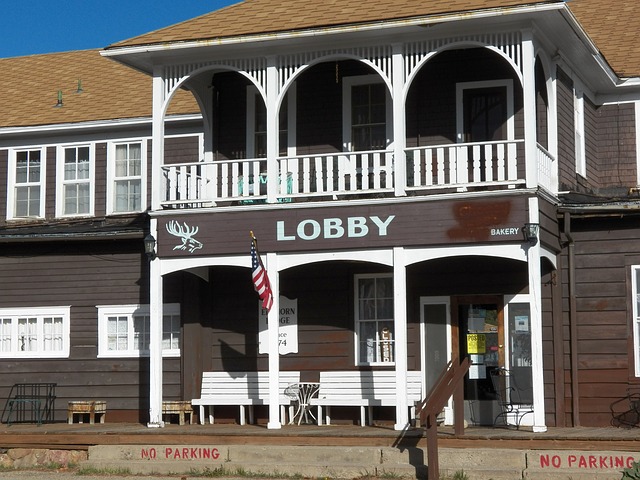
In Uncertain Times, Nonprofits Must Keep Up With Legal Compliance
04.11.2025 | Linda J. Rosenthal, JD

The Bolder Advocacy program of the Alliance for Justice is recognized as a leader in “nonprofit advocacy” education and training.
That term is widely misconstrued as synonymous with the lobbying restrictions of Internal Revenue Code section 501(c)(3), but those rules are broader in scope and effect. And many people also incorrectly believe that “nonprofit advocacy” is prohibited under the “politics ban” language of that tax-exemption statute. But this so-called Johnson Amendment is not a cut-and-dried prohibition on any and all contact between the nonprofit sector and officials, legislators, or even candidates for public office.
The “lawyers, coaches and nonprofit experts” at Bolder Advocacy have “one big goal: to make advocacy easy and accessible for … the nonprofit and foundation leaders who want to be great fighters” for their missions and causes. They “believe it’s vital for nonprofits to make their case to elected officials and the public so their priorities will get the attention and resources they deserve.”
They have recently released two updated resources:
Already – in the early months of 2022 – there is a critically important U.S. Supreme Court vacancy. And, because in our political culture, the next election begins the morning after election night, the 2022 primary election-season is already well under way.
The announcement in late January that Justice Stephen Breyer will retire at the end of the current term has set off a frenzy of speculation and debate about the successor to be nominated by the President and confirmed by the Senate.
In Supreme Court Vacancy And 501(c)(3)s: What Are The Rules? (July 10, 2018), we discussed the applicable law in connection with the nomination of Brett Kavanaugh. Our post was based in part on Bolder Advocacy’s posts: for example, Judicial Nominees – What Your Nonprofit Should Know (September 19, 2017) Nikhil Pillai, Esq., Bolder Advocacy Blog; Confirmation of Federal Judges and Executive Branch Nominees: What Your Nonprofit Needs To Know (June 2018; Fact Sheet); and Justice Kennedy is retiring, now what? (June 28, 2018; updated July 9, 2018), Nikhil Pillai, Esq., Bolder Advocacy Blog.
Since then, they have posted more information including (at the time of the nomination to replace the late Ruth Bader Ginsburg): Some Do’s and Don’ts for c3s Weighing in on the Supreme Court Vacancy (September 23, 2020) Ronnie Pawelko, Esq., Bolder Advocacy Blog.
Now, with a new nomination on the way, Bolder Advocacy has compiled a new centralized resource: The Judicial Nomination Advocacy Hub. While focusing particularly on Supreme Court vacancies, it also covers more generally how nonprofits are permitted to jump into the fray in connection with judicial nominations generally.
The new hub is kicked off with several helpful entries:
The Judicial Nomination Advocacy Hub includes links to all of Bolder Advocacy’s previous blog posts and fact sheets on this topic.
The general rule is that, for 501(c)(3) public charities, a judicial nomination is considered under the “lobbying” rules instead of under the so-called “politics ban.”
“The Internal Revenue Service (“IRS”) has recognized that influencing the confirmation of federal judges is exactly like influencing any other legislative vote through lobbying. ‘Because the Senate’s action of advice and consent on a judicial nomination is an action with respect to a resolution or similar item, the Senate’s confirmation vote constitutes a vote on legislation.’ (Notice 88-76, 1988-2 C.B. 392) …. You can lobby, as long as you stay within your lobbying limits. Your lobbying limit is determined by which IRS test you operate under, either the ‘insubstantial part’ test or the ‘501(h) expenditure’ test, the latter of which provides very generous lobbying limits.”
“There are different rules for other categories of tax exemption including 501(c)(4) [social welfare organizations], 501(c)(5) [mostly labor unions] and 501(c)(6) [business leagues] …‘[Y]ou can engage in an unlimited amount of lobbying, though you should ensure it’s tied to your exempt purpose.’”
Of course, the devil is in the details; for example, listen to the podcast segment called: “When does the meter start running for 501(c)(3) public charities?” The hosts explain that, for purposes of calculating the 501(h)-election accounting, the timing of the organization’s activities may make a difference. That is, lobbying activities in the period between the announcement of the pending retirement and the naming of the nominee may be calculable in a bundle separate from confirmation-period activities.”
The Bolder Advocacy program has compiled resources to help support nonprofits’ work in the nomination and confirmation process; see listings and links in How Nonprofits Can Help Shape the Future of the Supreme Court. There are also many separate but related topic articles including on the nuts and bolts of the lobbying rules and on the “lobbying election.”
In particular, note the offer of help: “Nonprofits who wish to play a role in the confirmation process may contact our technical assistance hotline by using this form or calling (866)-675-6229 with any advocacy questions.”
Bolder Advocacy has published an updated resource on the tricky and complex issue of how to safely navigate the lobbying rules and electioneering prohibitions in connection with your online presence (including your website and social media activities). See Influencing Public Policy in the Digital Age: The Law of Online Lobbying and Election-Related Activities (2022 Update), Allen Mattison, Esq. There is a separate PDF titled FAQ: Influencing Public Policy in the Digital Age.
This new publication is an update to an earlier version as well as to a Fact Sheet from 2018, and revised in 2021, titled Legal Tips On Using Social Media For Advocacy How 501(c)(3) Public Charities Can Use Social Media for Policy Change.
The author represents nonprofits on matters including tax law as well as federal and state campaign finance and lobbying laws. He has helped “numerous organizations establish a social media presence, drawing on his background in political and nonprofit communications. He published Friends, Tweets, and Links: IRS Treatment of Social Media Activities By Section 501(c)(3) Organizations, 67 Exempt Org. Tax Rev. 445 (May 2011), one of the first scholarly articles to address charities’ election-related use of Facebook, Twitter and other social networking tools.”
“Bolder Advocacy’s newest social media guide, Influencing Public Policy in the Digital Age, is dedicated to addressing the many complex legal and advocacy challenges nonprofit organizations face while conducting digital advocacy.” It “breaks down the activities that 501(c)(3)s, 501 (c)(4)s, and tax-exempt political organizations can engage in, specifically focusing on the federal requirements for nonprofit organizations.” Included in addition to the FAQ publication are “an accompanying set of reference materials” and “mock-posts to assist nonprofits with content creation.”
Increasingly in recent years, “philanthropy leaders have promoted the importance of “nonprofit advocacy” as the prism through which our sector should plan and carry out interactions with government leaders as well as with the general public.” See 501(C)(3) Post-Election Advocacy (December 10, 2020).
In that post, we echoed these experts’ sentiments that, while it was natural for all of us to want to step back briefly from the political and legislative arenas after the tumultuous and draining 2020 election year, these “are not normal times. The difficult reality is that we cannot afford a respite. There’s too much critical work to do immediately.”
Over a year later, there’s still too much critical work to do.
– Linda J. Rosenthal, J.D., FPLG Information & Research Director
